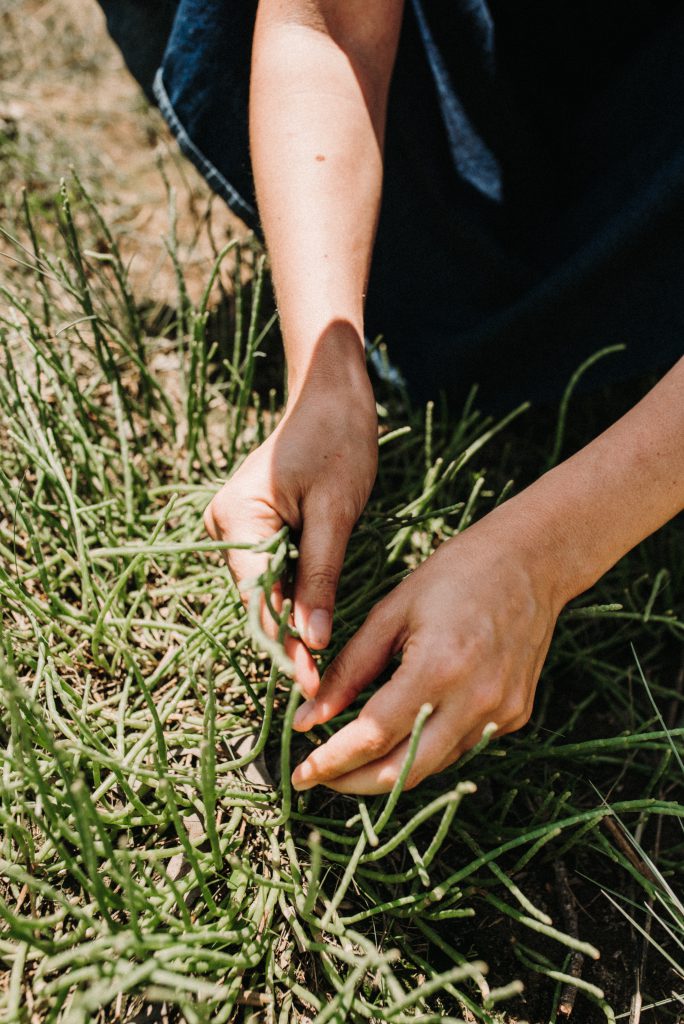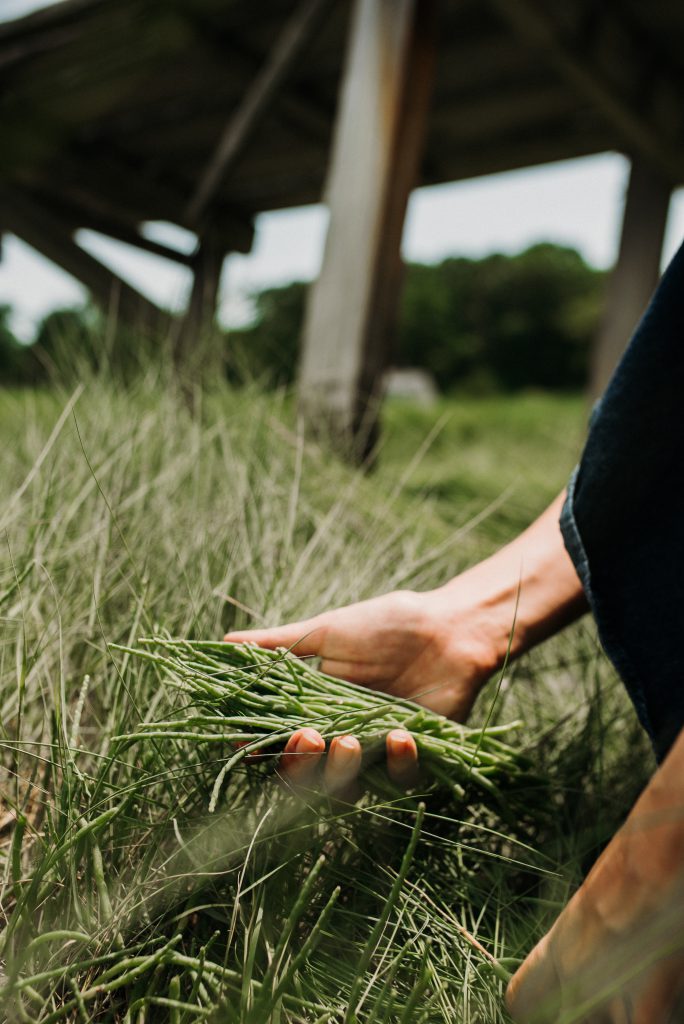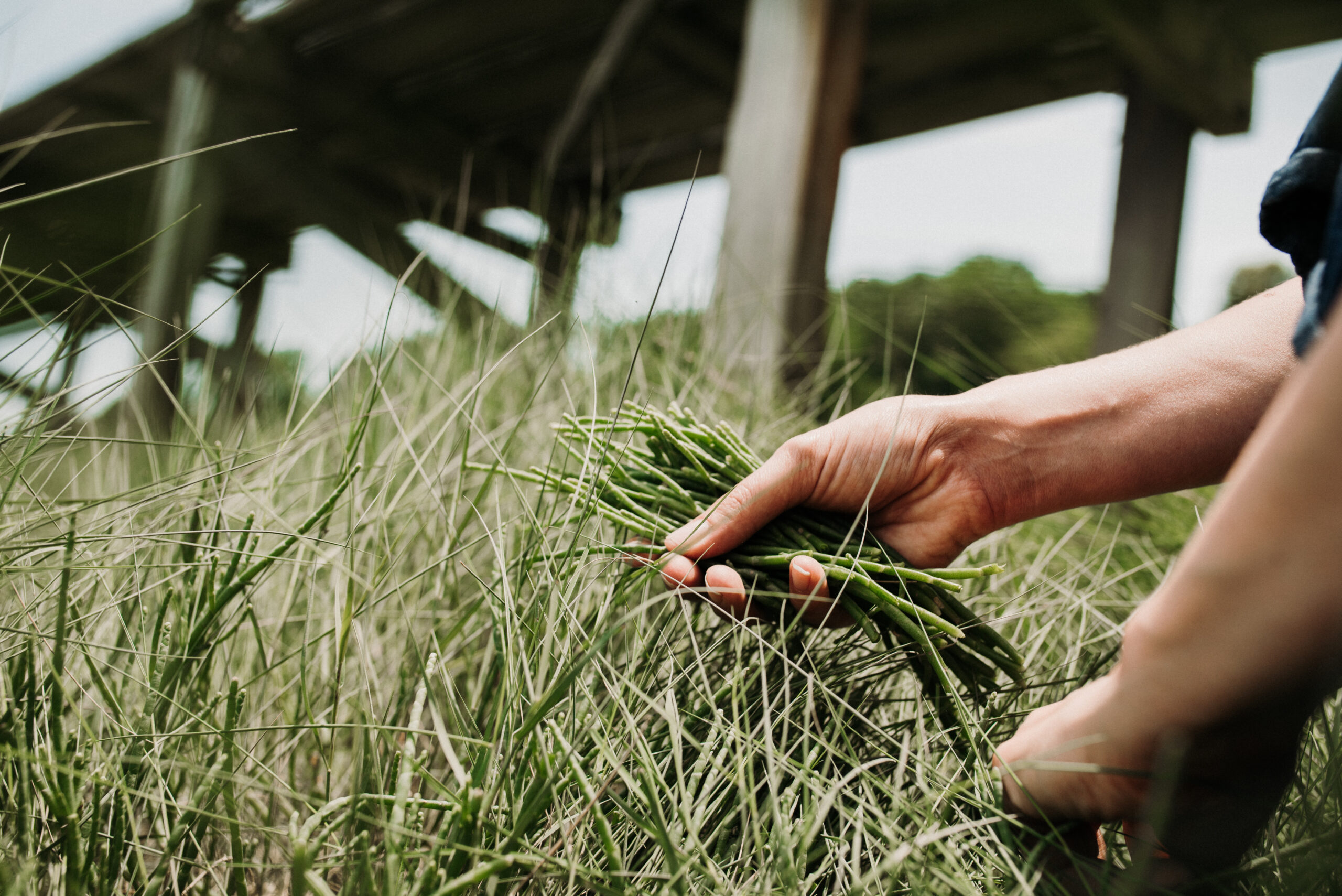
Sea beans, the mystical asparagus of the marsh, is one of my favorite things to forage. Sometimes foraging feels dangerous (mushrooms) or elusive (truffles), useless (pine needles?) or even just not delicious (dandelion greens). But not sea beans! Stumble upon them once in the marsh and you’ll start to see them everywhere during their early summer season. Catch them before the late summer when they turn woody.
Seabeans are mild like a green bean, or even an asparagus. But they are salty and crunchy and have a beautiful tenacity when chewed. Sea beans are incredibly versatile – use them in a salad, lettuce or grain, for a little salty crunchy pop. Blanch or steam them and cover them in butter (my mothers response to all green vegetables). And when you were over eager in your harvest (how many seabeans do you really need?) you can pickle them just like you would a cucumber and save them for the winter or spring. This is my preferred way of eating them because of how the acid works with the salt. It makes magic.


Seabeans aren’t really a ‘thing’ for many people – but they are for folks at Island Creek. We have been trespassing and then hustling them to chefs for years, not to mention hoarding them for ourselves. Keep an eye out the next time you’re around a marsh from June-August. If you’re looking for an easy way to enjoy them, below is my recommended method for pickling them, modified from my favorite pickling recipe in the The Joy of Pickling by Linda Ziedrich.
Happy harvesting.
Dana

Pickled Sea Beans (makes 5 pints)
INGREDIENTS:
6-7 handfuls of Sea beans, cut into 3-inch lengths
5 large garlic cloves
1 1/4 teaspoons whole black peppercorns
20 whole allspice berries
5 tarragon sprigs
5 thyme sprigs
2 3/4 cups white wine vinegar
2 cups water
1 tablespoon pickling salt
INSTRUCTIONS:
Combine cut sea beans in a large bowl. Line up 5 pint mason jars. Add 1 garlic clove, 1/4 teaspoon peppercorn, and 4 all spice berries in to each jar. Separate sea beans into the 5 pint mason jars evenly. Then add one tarragon sprig and one thyme sprig into each. Close the lid, and shake up the jar to make sure the beans are settled.
In a saucepan, bring the water, white wine vinegar and pickling salt to a boil, making sure the pickling salt is dissolved completely. Pour the liquid into the mason jars, evenly distributing the liquid, and leaving about an inch of room at the top of each jar.
Let the jars cool before storing them away. Leave in a dark, dry and cool place for 3 weeks (or more). Once three weeks has passed, crack open a jar and enjoy your pickled sea beans! Throw them on top of a salad, in a bowl of quinoa, or enjoy them straight out of the jar.



